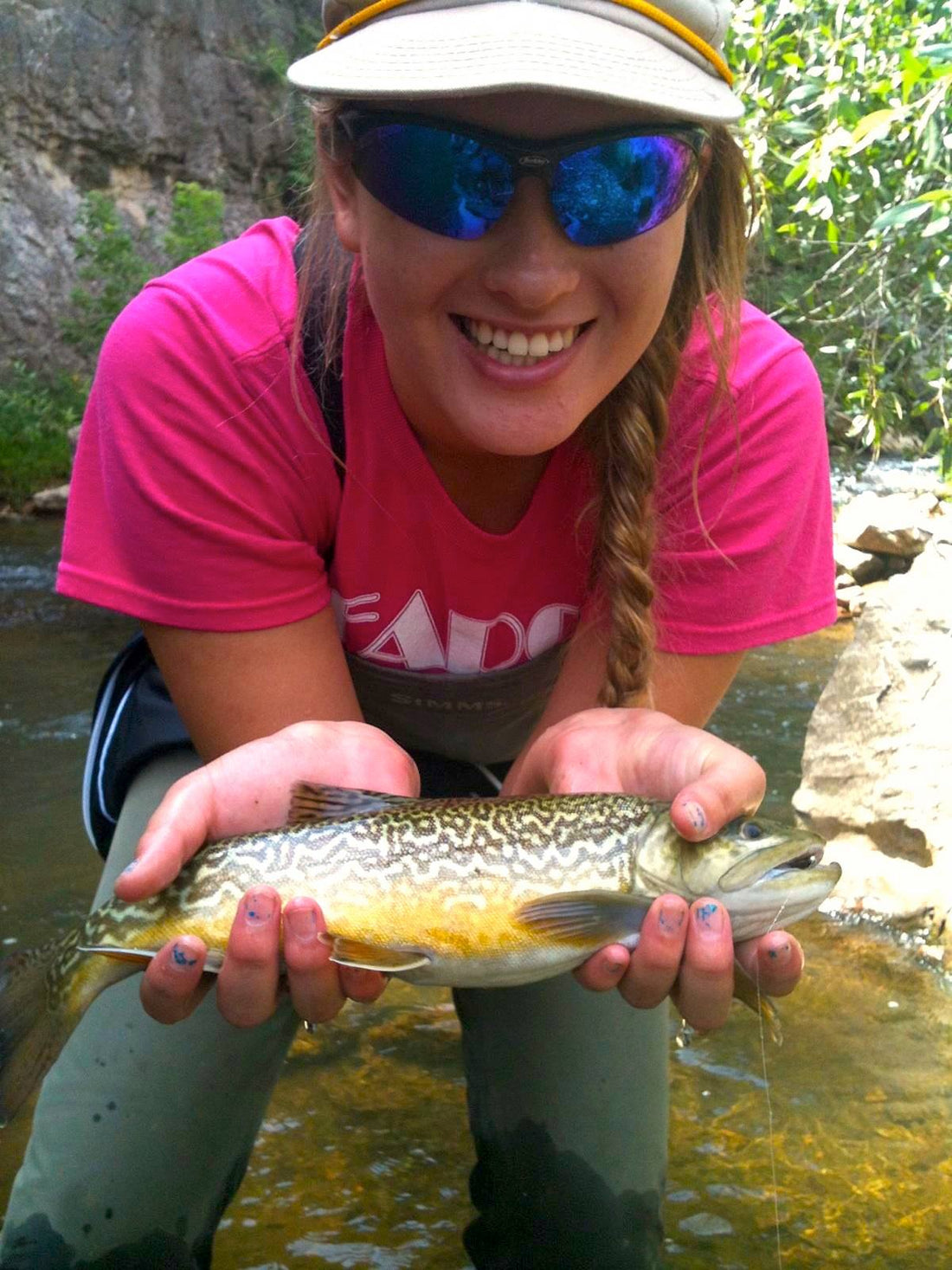
Not Fishing The "In-Between" Water Can Cost You!
Share
"What about over there?" my client said as she pointed to a spot that I'd cast to a hundred times, and never even had any resemblance of a strike.
"Sure, give it a shot, there's usually nothing in there th - SET!", I said, being interrupted mid-sentence by her indicator scooting upstream several inches. "That's a nice brookie, er, I think that's a brown actually", I said as it neared us, and then quickly slid the net under it. A quick glance in the net, and I knew why I was confused on the species; the only wild tiger trout I'd ever seen in person - the fish in the picture at the top of this post - was recovering in the bottom of my net. A few quick pictures, a couple high fives, and it was gone as fast as it came. Tiger Trout are a true rarity in the Black Hills, I've personally only seen pictures from a trusted source of one other legitimate wild Tiger - not saying they haven't been caught, but they can truly be considered rarities. The whole scenario had me thinking pretty hard about why I wouldn't have told her to cast there, and how many times I'm surprised at where fish are holding. She had just caught a truly amazing fish, in water that 95% of people would walk right by. Oftentimes, the biggest fish of our trip, month, or whole season comes out of what most people consider to be "marginal" trout water, that many people - myself included - often walk right past.
We've all been guilty of it - you pull into the parking area of your favorite spot, pull the gear out of your pickup, walk to the same hole that you always have success in, and you fish the same seam, catch a few fish, and call it good, all while ignoring many other potential spots. You catch fish, but you're truly limiting yourself. Trout are creatures of habit - they like depth changes, current edges, and structure. These places naturally give them cover, collect food, and make them happy campers in general. These places also attract anglers - plenty of them, and often good ones. After the same fish have been pounded with the same 6 mayfly patterns below a Thingamabobber over and over, day after day, they get smart. Most tailwater fish are a prime example of this - they either become ultra-selective, or they move shop and find a new place to kick it. Big fish are especially notorious for this, and I've seen it happen again and again on one of our our local tailwaters. The fish in the obvious holes are nearly impossible to catch most days, with the exceptions of miraculous hatches, but many anglers will happily go flail the obvious holes for a few hours, not catch anything, and proceed to say that the fish weren't biting that day or they didn't have the magic fly. Guiding, however, it's your job to get people into fish, and that's what my clients expect. So, my solution is to fish all the water that everyone else ignores, and it's saved many a day for me. Fish like seams and current changes regardless of how deep they are, and many of the largest trout I've caught have been in less than 2 feet of water, so don't overlook current seams in riffles, pocket water, and shallower runs. Also, fish in fast water are exponentially easier to catch hook, because they have a split second to decide whether or not to eat something before the current sweeps it by them. They'll eat bigger flies, on heavier tippet, and they seldom refuse flies, as long as it's something that remotely resembles some variety of aquatic insect. I've had days where my clients were fishing size 12's and 4X to willing fish, and other anglers were fishing 22's and 7X to fish that seemingly had lockjaw. It's saved a lot of days out on the water for me to say the least.
Walk past your favorite holes, go where the trail stops, and fish the "tweener" water - you won't regret it!
Ryan Gabert
